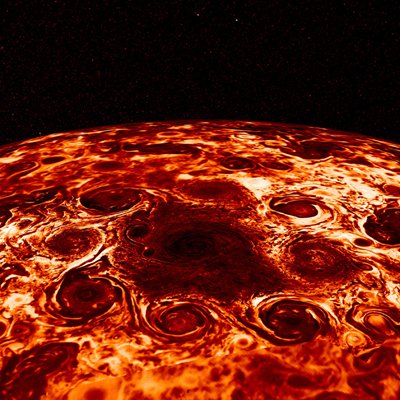The Juno mission, a probe sent by NASA to Jupiter and operated by JPL, has collected data indicating that the atmospheric winds of the gas giant planet run deep into its atmosphere and last longer than similar atmospheric processes found here on Earth. The findings, part of a four-article collection on Juno science results being published in the March 8 edition of the journal Nature, will improve understanding of Jupiter's interior structure, core mass and, eventually, its origin.
The Nature articles also include Juno science results showing that the massive cyclones that surround Jupiter's north and south poles are enduring atmospheric features, unlike anything encountered in our solar system.
"The depth of the winds on Jupiter has been debated for half a century," says David Stevenson, the Marvin L. Goldberger Professor of Planetary Science at Caltech, leader of the Interiors Working Group of Juno, and co-author of the Nature papers. "It matters because it helps us understand how the planet works. The two leading ideas were that the winds were very deep, an expression of how the planet convects from deep down; and that the winds were very shallow. The answer is neither." Stevenson believes that the winds are truncated about two or three kilometers below the surface because of their interaction with the planet's magnetic field, which provides a drag on the winds.
Read the full story from JPL News.
 This composite image, derived from data collected by the Jovian Infrared Auroral Mapper (JIRAM) instrument aboard NASA's Juno mission to Jupiter, shows the central cyclone at the planet's north pole and the eight cyclones that encircle it.
Credit: NASA/JPL-Caltech/SwRI/ASI/INAF/JIRAM
This composite image, derived from data collected by the Jovian Infrared Auroral Mapper (JIRAM) instrument aboard NASA's Juno mission to Jupiter, shows the central cyclone at the planet's north pole and the eight cyclones that encircle it.
Credit: NASA/JPL-Caltech/SwRI/ASI/INAF/JIRAM

